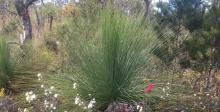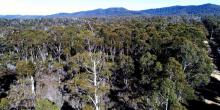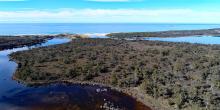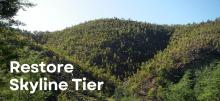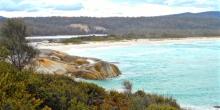 The North East Bioregional Network (NEBN) supports a consistent ecologically based approach to nature conservation.
The North East Bioregional Network (NEBN) supports a consistent ecologically based approach to nature conservation.
Campaigns
More Reports
Ecology & Economy. Finding the Balance: Presentation and Notes from our well attended Mountain Bike Forum held on Saturday 15th July 2017
Report on Reform of Conservation Covenants This report considers whether current laws provide adequate security for the natural and cultural values protected by conservation covenants
Economic Report This report explores the potential economic benefits from the Skyline Tier Restoration Project as well as the economic activity generated
Endowment Fund The establishment of an East Coast Conservation Corridor Endowment Fund will provide the long term certainty required to help maintain and restore the ecological health, diversity and beauty of this exceptional place
Ecological Skill Set There is growing demand for skills in ecological restoration both locally, nationally and internationally as governments and private enterprise invest in restoring degraded lands for conservation, carbon credits and ecologically sustainable timber production. The Ecological Restoration Skill Set consists of three units from the Certificate II Conservation/Land Management qualification:
Break O Day Priority Habitat Mapping Project Report
This report was produced to be used in the new Biodiversity Code of the Break O Day Planning Scheme. This will be the first time that landscape connectivity has been explicitly recognised in local Planning Schemes.
Land Use Plan
This is a Conservation Action Plan for the Break O Day area highlighting the important ecological processes and values that need to be protected, sustained and restored in the region.
East Coast Corridor Conservation Report
This report presents a concept for a large-scale conservation initiative to connect, restore and maintain the outstanding ecological values of Tasmania's East Coast and North East. This landscape-scale conservation corridor extends 280 km north-south from Cape Portland to Cape Pillar, covering 2 degrees of latitude. The existing reserve system and a number of established conservation projects provide a solid foundation for this integrative corridor concept
Native Vegetation Management Plan, Seaview, Pyengana, Tasmania
In this report information about restoration of Eucalyptus nitens plantations back to native forest is provided. There is a particular emphasis on streamside/riparian areas. This land is in the upper catchment of the South George River, part of the St Helens water supply catchment.
Bay of Fires Proposal
The Bay of Fires is an area of sublime beauty and important biodiversity values with strong cultural links for Tasmania's Aboriginal community. It is also highly valued by East Coast residents, treasured by the Tasmanian community as a whole and attracts visitors from Tasmania, Australia and beyond
Native Restoration of Scamander Pine Plantation
This report details how to go about restoring the whole 2,000ha plus of the Scamander Pine Plantation back to native forest. A management key is provided which outlines methodology for this process and is broadly applicable to many other pine plantations in Tasmania.
NEBN Plantation Restoration
Plantation Restoration in Tasmania: Methodology and Prioritisation
Benefits of Restoring Skyline Tier
The Northeast Bioregional Network engaged Bushways Environmental Services Tasmania to conduct an assessment of the benefits to the community of restoring Skyline Tier
Constable Creek Report
This document presents a proposal for a new reserve in North East Tasmania. The proposed Constable Creek - Loila Tier Reserve covers an area of approximately 13,200 hectares of largely pristine native forest, heathland and watercourses
